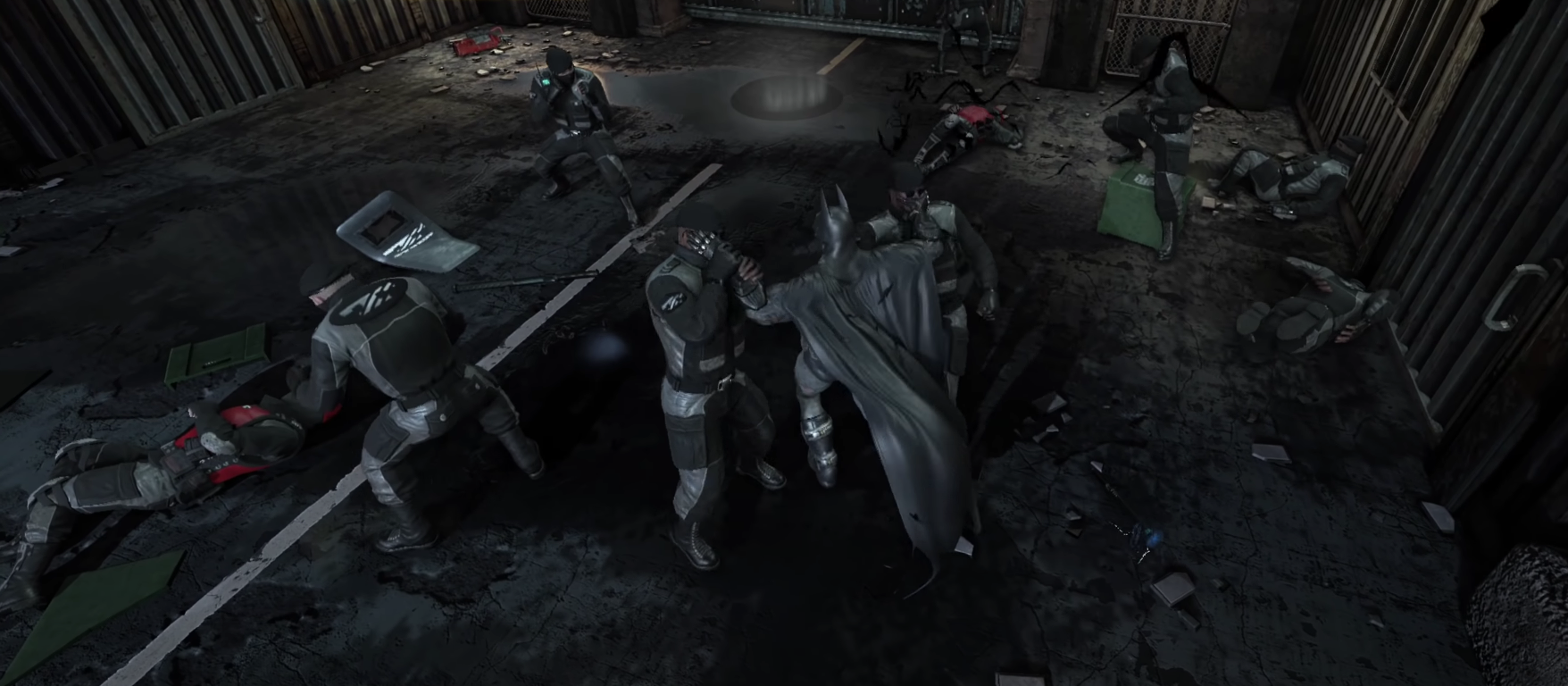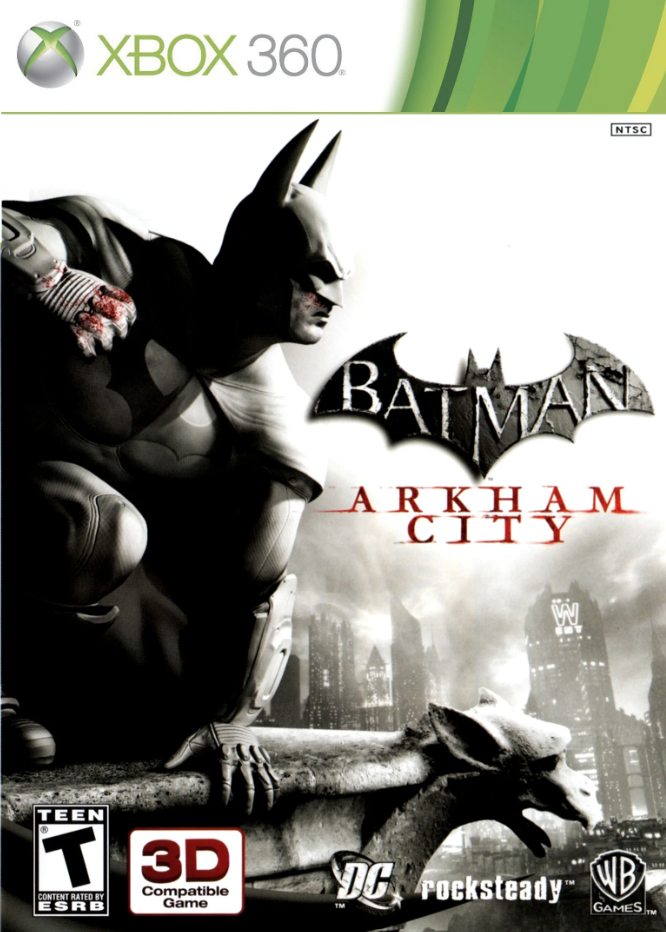

“You think I’m taking advice from some guy who’s never even been in a fight?”
Due to a substantial influx of convicts, Arkham Asylum and Blackgate Penitentiary have exceeded their capacities, prompting the powers that be to take drastic measures. To wit, prison director turned mayor Quincy Sharp has erected a fortified wall around the slums of Gotham City and tossed the prisoners inside Escape from New York-style, giving them free reign of the territory so long as they do not attempt to escape its generous confines.
This is an obviously stupid idea. And yet, this hellish milieu of crumbling public buildings, barbed wire, and searchlights serves as a brilliant setting for Rocksteady’s deliriously pulpy Arkham Asylum sequel just as it did for John Carpenter’s campy action film. With a deadly virus pulsing through his veins courtesy of arch nemesis Joker, Batman must work against the clock to unravel the truth behind the mysterious “Protocol 10,” tangling with a menagerie of classic villains in the process—Riddler, Mister Freeze, Harley Quinn, Clayface, Ra’s al Ghul, Bane, Poison Ivy, Solomon Grundy, Two-Face, Penguin, Calendar Man, and Hugo Strange among them. The story is pure comic book punchiness, composed of short little episodic jags that plunge into the depths of a subterranean carnival land and rise to the outsized blimps and armed choppers trawling the horizon. The madcap plot twists and contorts like a nightmare, all in the service of cycling through its rogue’s gallery of evildoers and filling out Batman’s arsenal of gadgetry.
Less a reimagining than a smart expansion on its prototype, Arkham City doubles down on what propelled Arkham Asylum to great acclaim: immersing the player in the physical and psychological aspects of the Batman. Lightly iterating on the original’s extremely fluid combat system and stealth mechanics, the game’s entire setup—from traversal of its open world, to its rhythmic fighting style, to its gargoyle perches, to its multi-use tools, to its grimy funhouse level aesthetics and animations—is geared around player immersion, such that by the time one is done playing through the main campaign they’re eager to continue exploring the map’s nooks and crannies with their upgraded gadgets; and ecstatic to find another selection of challenge maps where error-free combos reward the player with high scores and a heck of an adrenaline rush. Given substantially more elbow room and a smart update to the grappling and gliding mechanics, maneuvering with Batman now brings with it the sheer joy of smooth movement that characterizes Crackdown and Just Cause 2. The figure moving around on the screen becomes less an avatar than an extension of the player themselves.
There was no chance that Rocksteady was going to give players an experience as revelatory as the original game. But with the gentle refinement and expansion offered here—better bosses, smarter and better-equipped goons, slicker movement, denser gameplay, a happy medium sized open world—they’ve pushed the envelope a little bit further. Most crucially, they avoided any crippling missteps as they went about making their improvements. Eh, well, on second thought, it would have been nice if the Catwoman side missions didn’t require coughing up any extra dough.